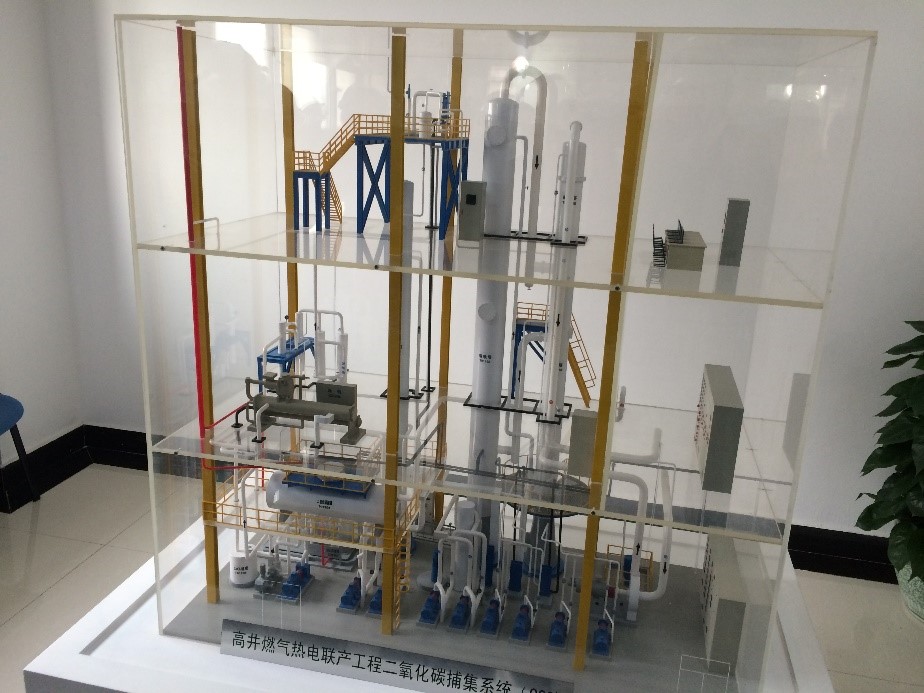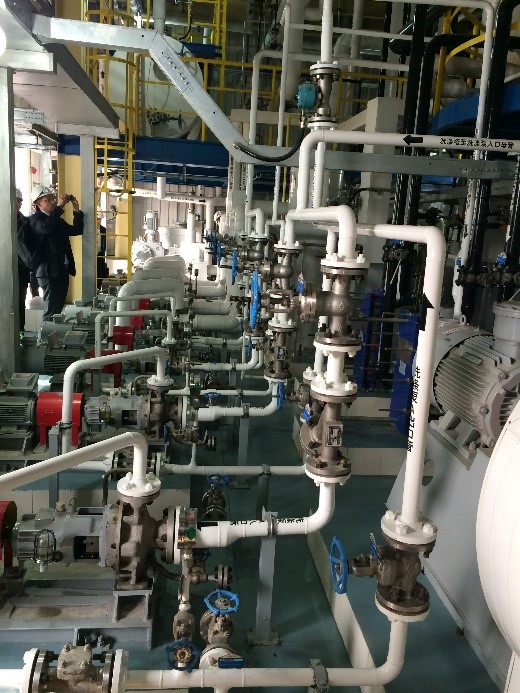Insights and Commentaries
China CCS deployment expands
15th May 2015
Topic(s): Capacity development, Carbon capture, Engineering and project delivery, use and storage (CCUS)
In this Insight, the Global CCS Institute's Dr Tony Zhang, Senior Adviser for Carbon Capture reports on progress in carbon capture and storage (CCS) in China. Tony attended the recent ADB-China Datang Corporation CCS Workshop and Carbon Capture Forum, presenting alongside China’s Ministry of Science and Technology, Huaneng Group, PetroChina, Sinopec and a number of universities and international companies. The following Insight outline's the Datang CCS Workshop and the MOST Carbon Capture Forum held during the event.
Datang CCS Workshop
On 30 March 2015, I attended the ADB-China Datang Corporation CCS workshop, held in Beijing, China. My time at the event clearly demonstrated that carbon capture and storage (CCS) remains an important research priority in China, particularly as the rapidly growing demand for energy continues to impact on air quality and carbon emissions. The workshop marks the conclusion of a technical assistance project co-funded by the Asian Development Bank (ADB) and the Global CCS Institute. In attendance were representatives from Asian Development Bank (ADB), the British Embassy, Canadian Embassy, corporations and academic institutions.
An interesting presentation came from the Datang Corporation which has constructed and operated the world’s first carbon capture pilot plant for a natural-gas fired power station at their Combined Heat and Power plant located in Gaojing. The four year old project captures around 10 tonnes per day (tpd) carbon dioxide (CO2) from the station exhaust gas. The capture process is solvent-based and two types of solvent were used: modified MEA and ionic liquids. The flue gas contains around 4.6% CO2 by volume. Due to the very low concentration of CO2, the energy penalty is around 4.36 GJ/t CO2 captured.

A model of the Datang carbon capture pilot plant
This project is a milestone for carbon capture in natural gas power stations. The experiences and lessons learned will benefit other projects around the world. For Datang Corporation, this has become a very valuable platform for multiple purposes including:
- demonstration of Datang’s commitment to low emission energy technology
- a training platform for Datang personnel
- a testing platform for CCS technology developers
- a learning platform for Datang management
- cultural transformation within the corporation
The power industry has its own unique culture and traditions for project management and O&M guidelines. In contrast, carbon capture is in essence a chemical engineering process. During project implementation cultural collisions are often inevitable for project managers with electrical engineering backgrounds. This project has achieved significant organisational learnings for Datang Corporation. It has clearly improved awareness of emission reduction and the importance of CCS within Datang Corporation and in China. This learning was further evidenced in my discussions with Datang's senior management who reported many insights about CCS from the project.

Picture from the operational Datang pilot project
MOST Carbon Capture Forum
On 31 March 2015, China Ministry of Science and Technology (MOST) held a carbon capture forum in Beijing. The international forum was organised by China CCUS Alliance and the Institute. It was very well attended by people from China, North America, Europe and Australia. The Forum was chaired by Dr XU Shisen, President of Huaneng Clean Energy Research Institute (CERI).
Support for CCS in China
A senior official from MOST delivered the opening speech in which he summarised some major breakthrough CCUS projects in China. Two important factors for CCS development in China were highlighted:
- The Chinese government has established policy to promote creation and innovation, “Made by China 2025”
- The upcoming Paris Conference of the Parties (COP21) would likely achieve specific emission reduction targets for the world
Three expectations were raised:
- Perform more in-depth investigations of CCS technology development trend and learn from others’ experiences and lessons.
- Investigate how to promote creation-driven CCS development and how to apply CCS technology and to cultivate economic growth and explore new business models.
- Strengthen international collaborations by incorporating discussions focused on commercial collaborations.
This speech clearly demonstrates the support for CCS technology development and commercialisation in China.
Commercial CCS must be ready by 2030
Dr Xu from CERI presented first. He mentioned that CCS has been cited in many national policies on climate change and energy. To meet expectations and climate change targets, the industry must be ready for deployment by 2030. He further emphasised that policy support and flexible financial tools are needed for deployment of CCS.
I was the second to present and shared my thoughts on carbon capture technology development. It is always good to see people in audience nodding during your speech. The focus of my presentation was CCS technology development, including:
- An update on carbon capture technology development,
- Comparative analysis for carbon capture cost reduction curve, and
- Promising areas for next generation carbon capture technologies.
New U.S.-China CCS partnerships
A US Department of Energy (DOE) representative spoke after me and discussed the US programs. More importantly, it was revealed that during the Chinese president’s state visit to the US this September, an announcement will be made regarding four CCUS projects - two for each country. At least one of these will focus on CO2-EOR (enhanced oil recovery) and CO2-EWR (enhanced water recovery). The two governments are in discussions regarding the details of such projects.
After that, a variety of speakers presented including those from Huaneng Group, PetroChina, Shell, Siemens, Sinopec, CSIRO, Tsinghua University, Huazhong University of Science and Technology on various technologies for carbon capture. It was great to see the strong industry engagement and support of CCS technology.
During the panel discussion, Dr Xu asked me questions regarding the Institute’s role in China. He recommended that the Institute should not only bring knowledge into China but also promote China’s CCS expertise on the global stage. It was a great request and question to receive and the Institute is indeed planning to do more work in China, together with the Chinese government, industries and research community.
CCS investment in China expected to rise
Mr Kang from MOST concluded the Forum with a very informative and encouraging speech. The Chinese government invested RMB 600-700 million for CCS R&D during the 12th Five-Year Plan with an industry matching fund of around two billion. For the 13th Five-Year Plan, more investments for CCS technology development are likely to be made by the government and industries.
The discussions during the Forum demonstrate China’s understanding of the role for CCS in emissions reduction and commitment to CCS technology development and deployment. The implementation of a national carbon trading scheme in 2016 would further improve the awareness of the need for emissions reduction among the wider community and within the government. Such a trading scheme would also be likely to accommodate CCS and to provide additional incentives for CCS deployment to enable CCS to compete alongside other energy technologies such as renewables.